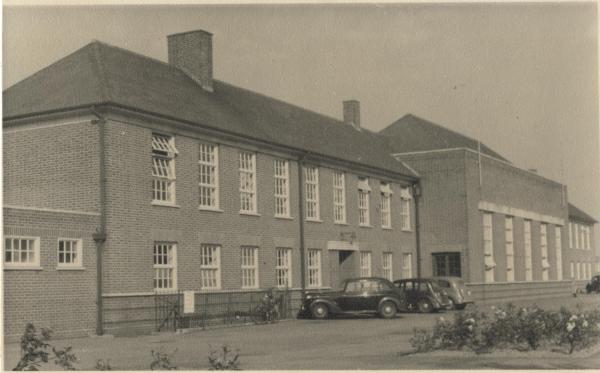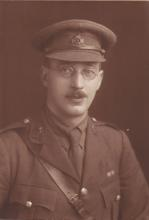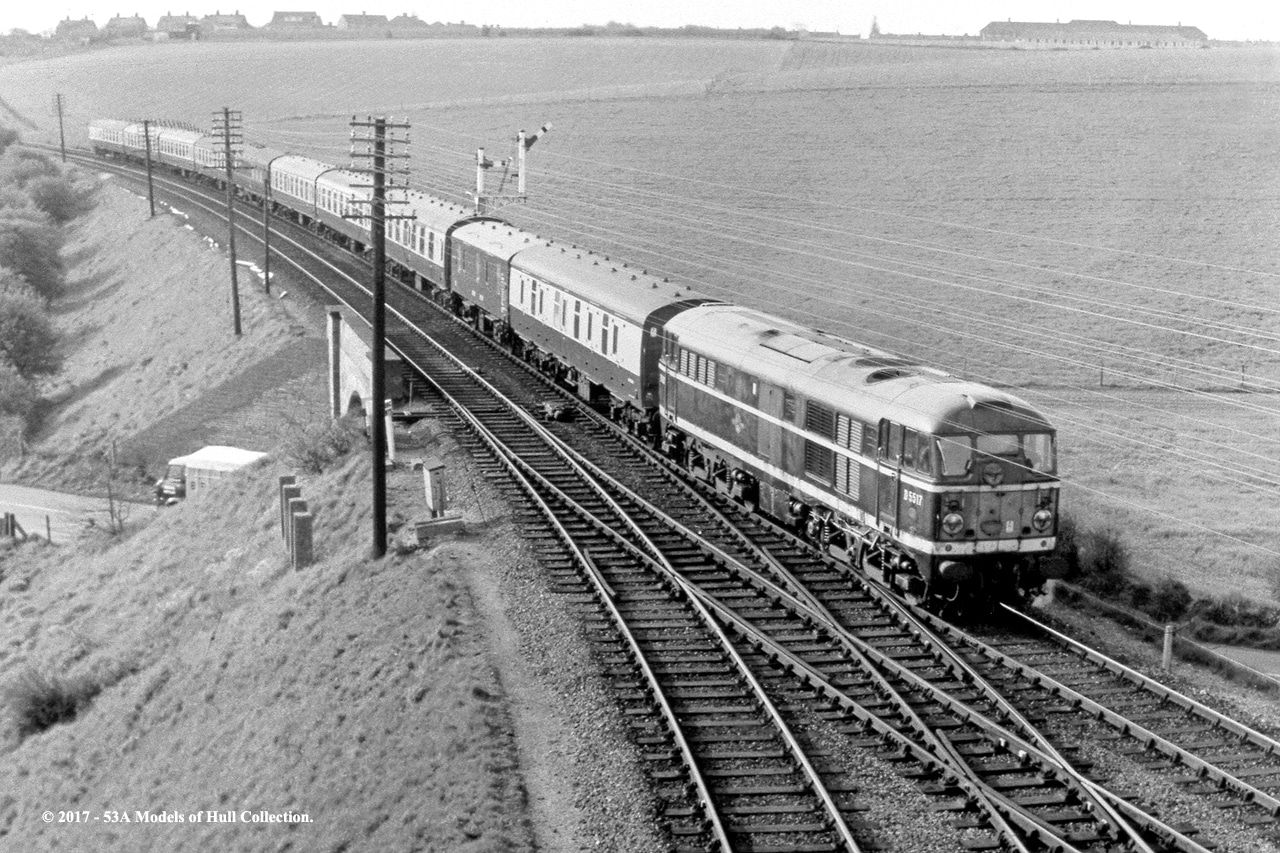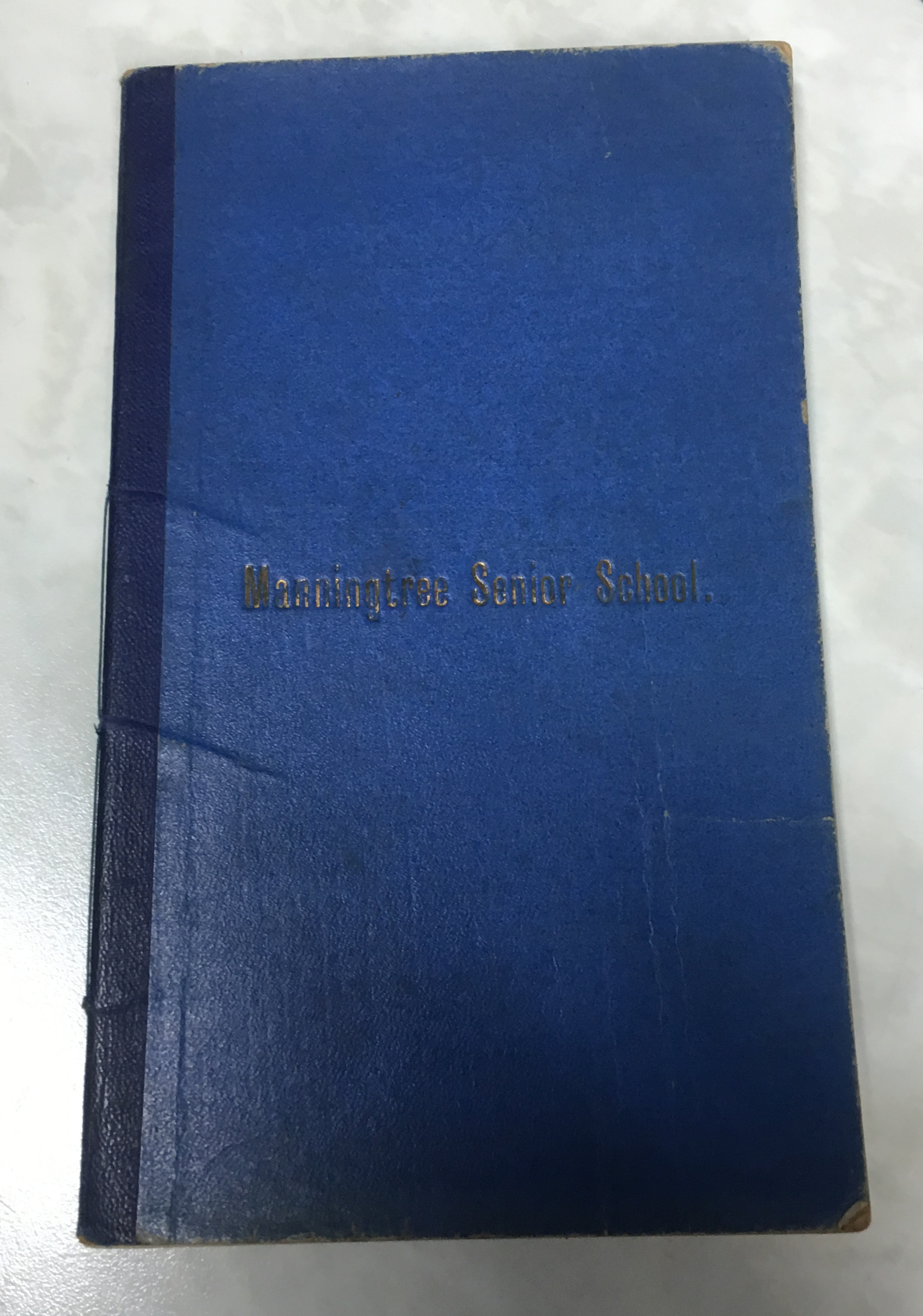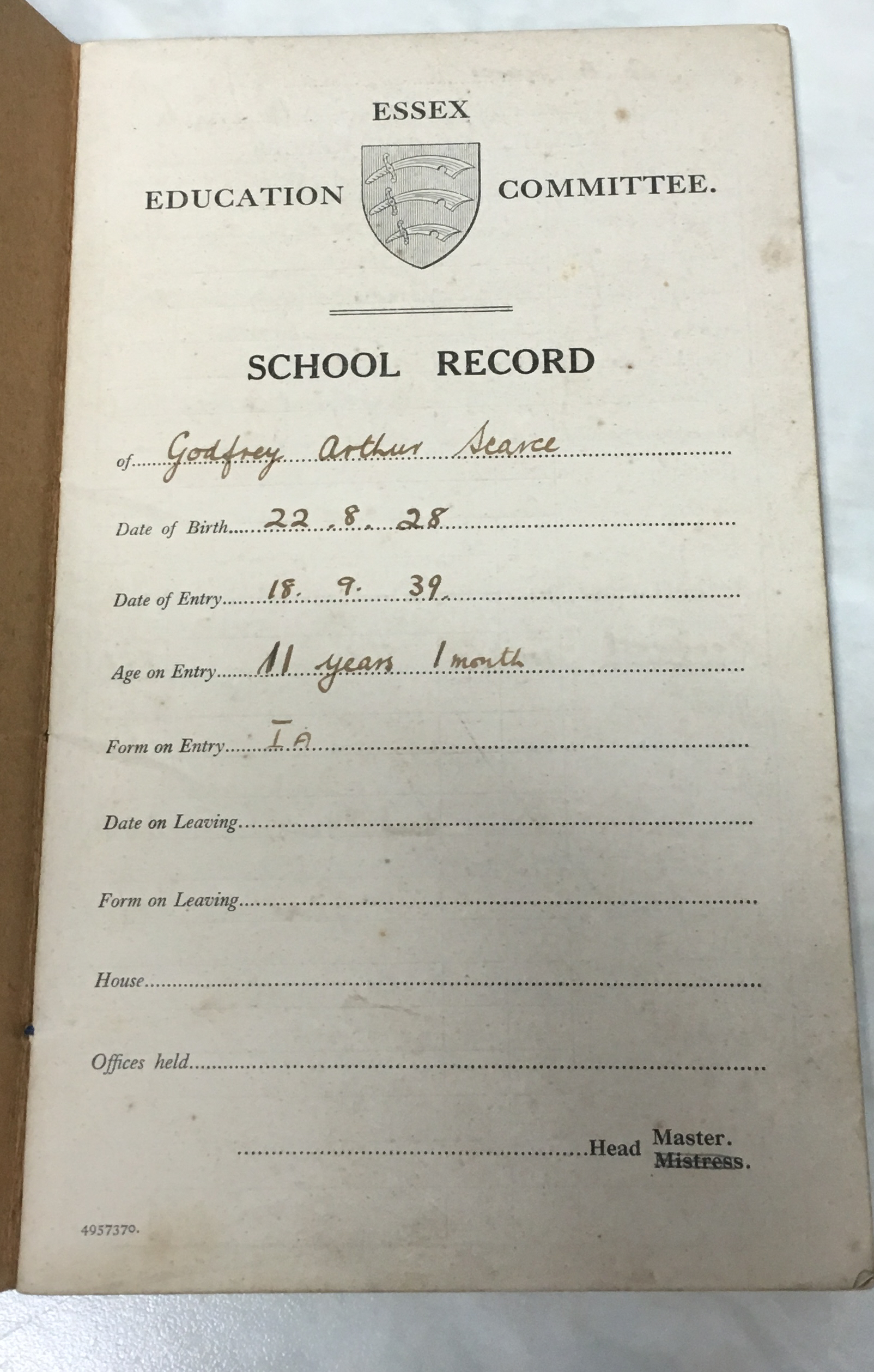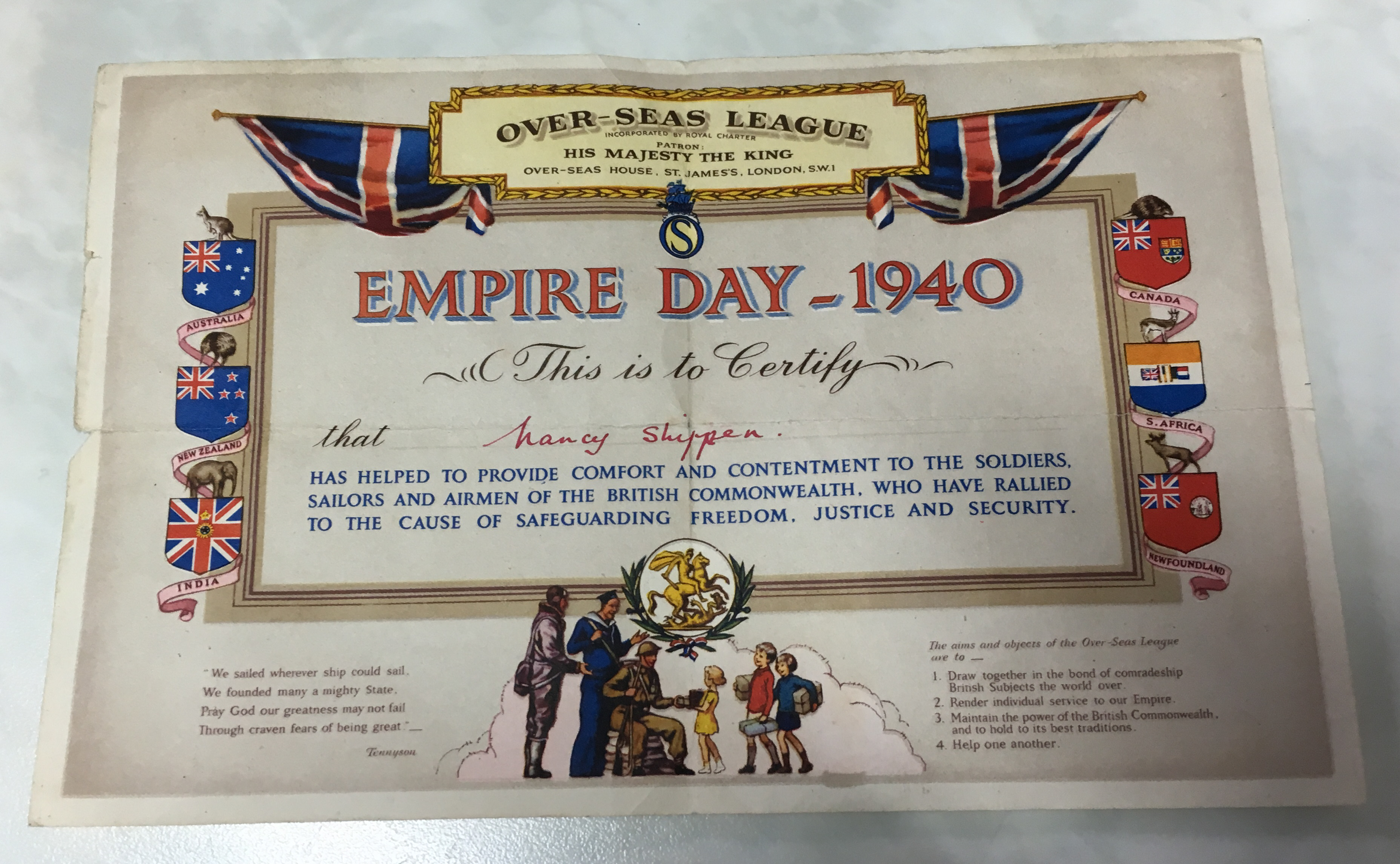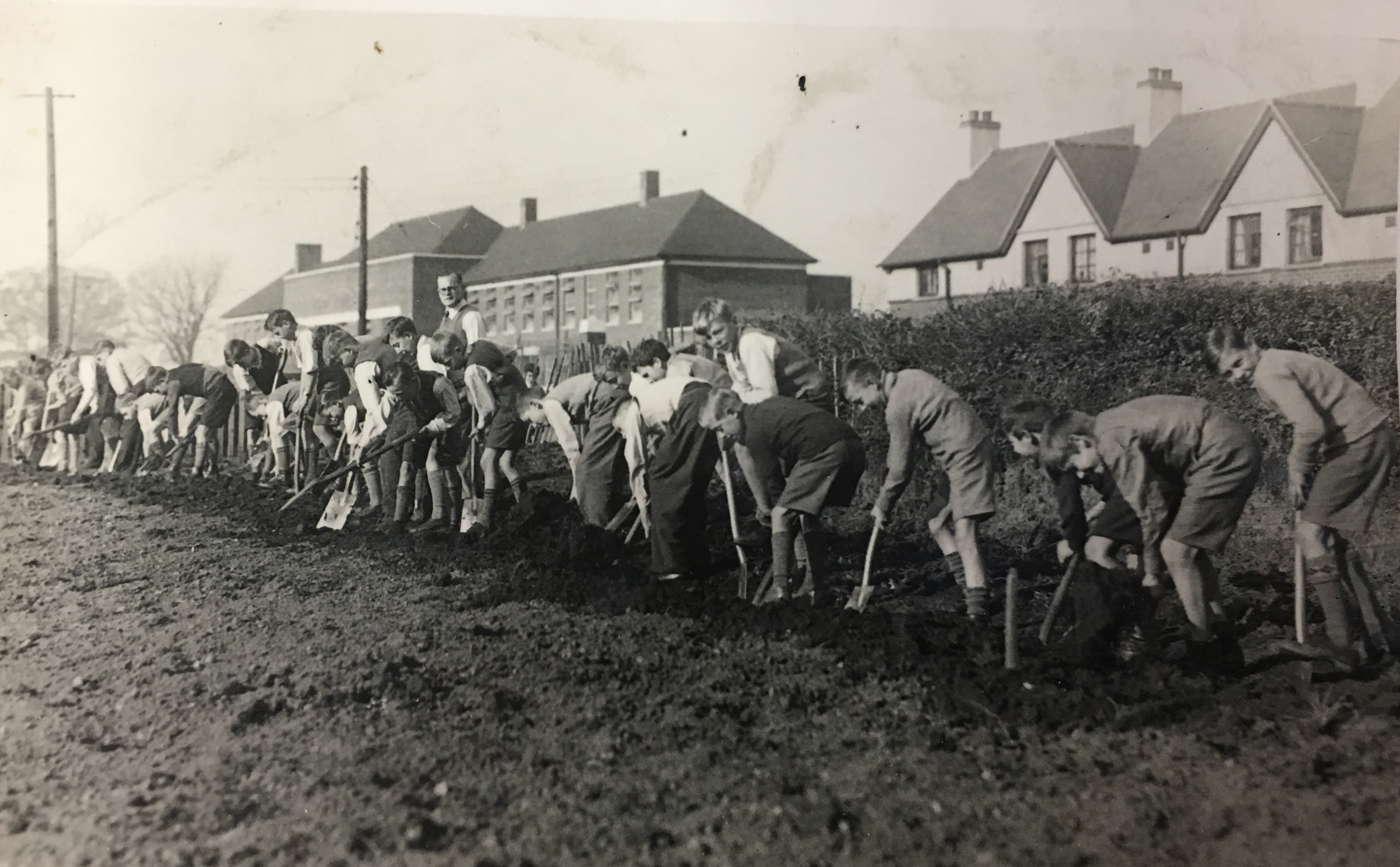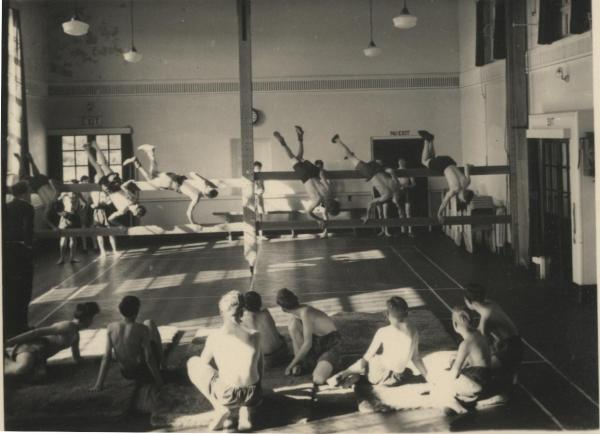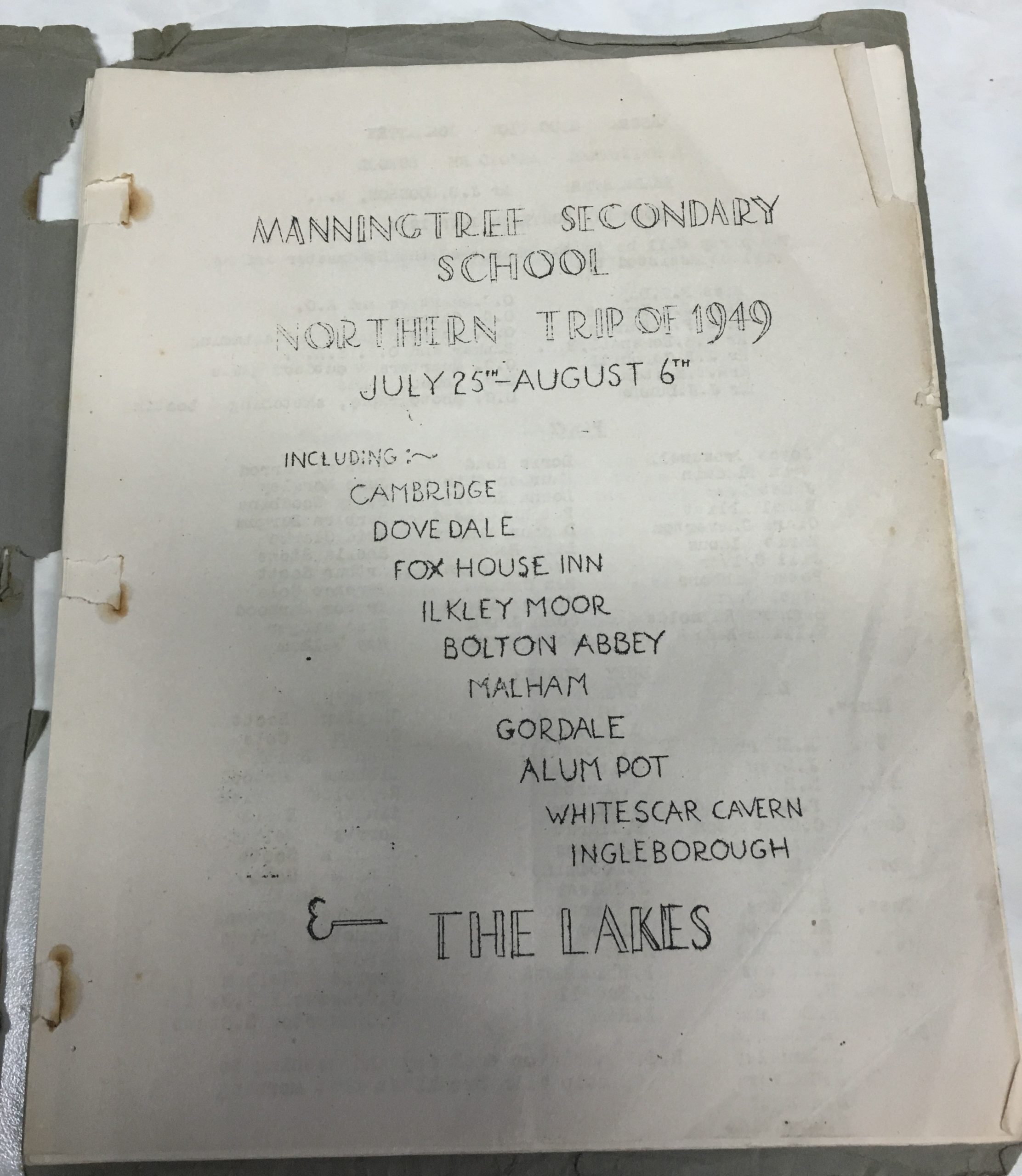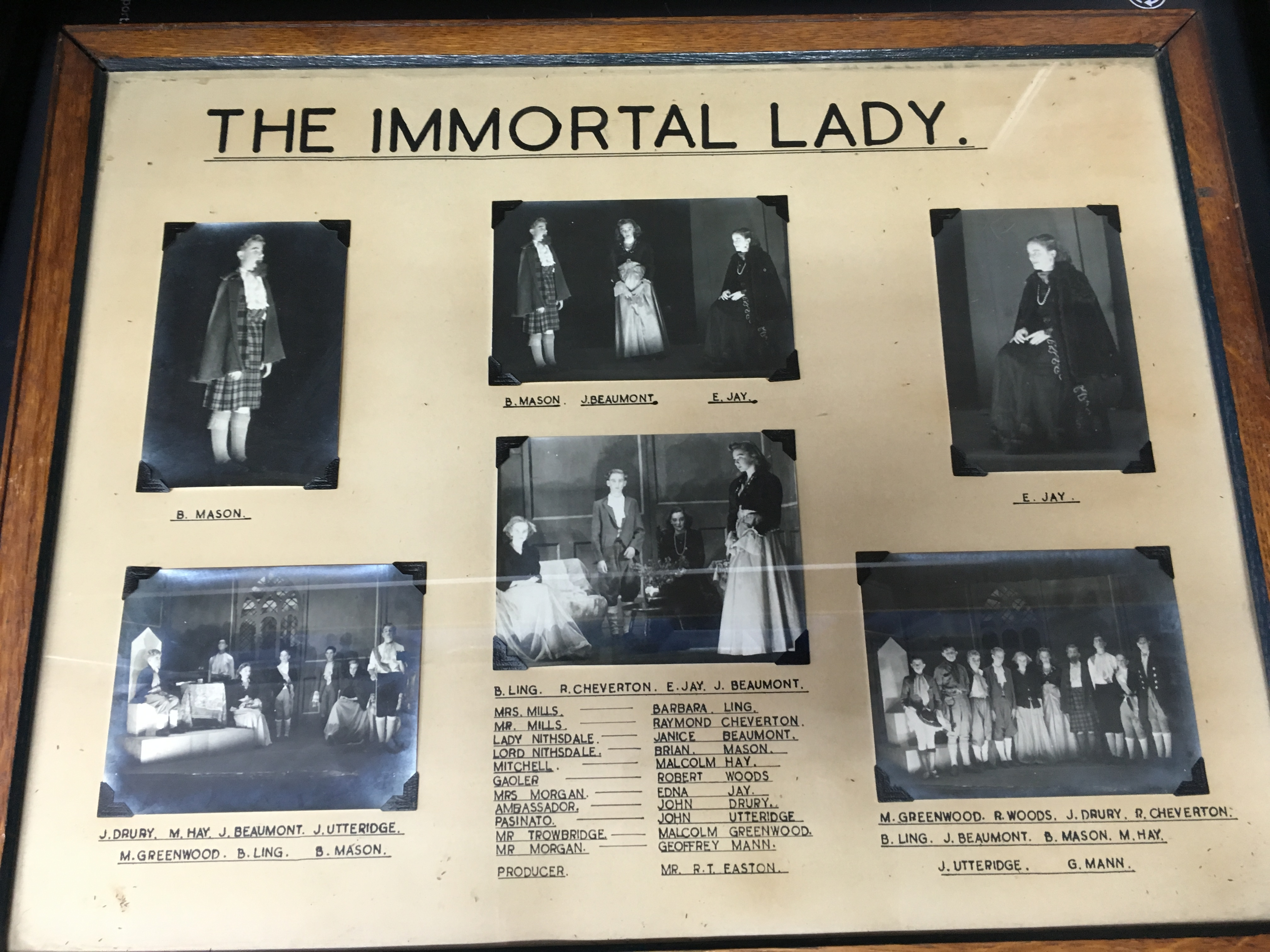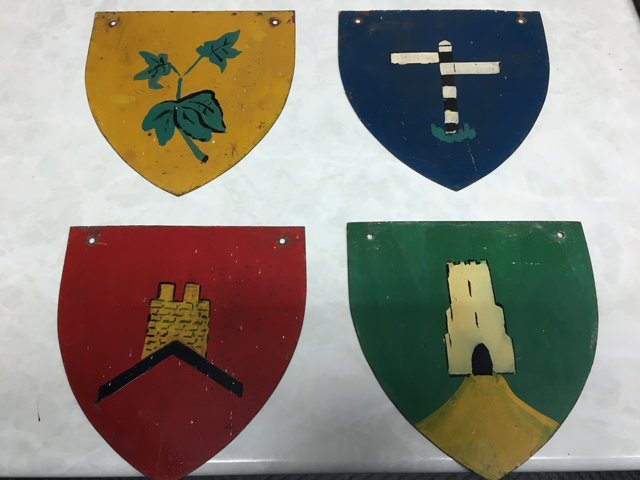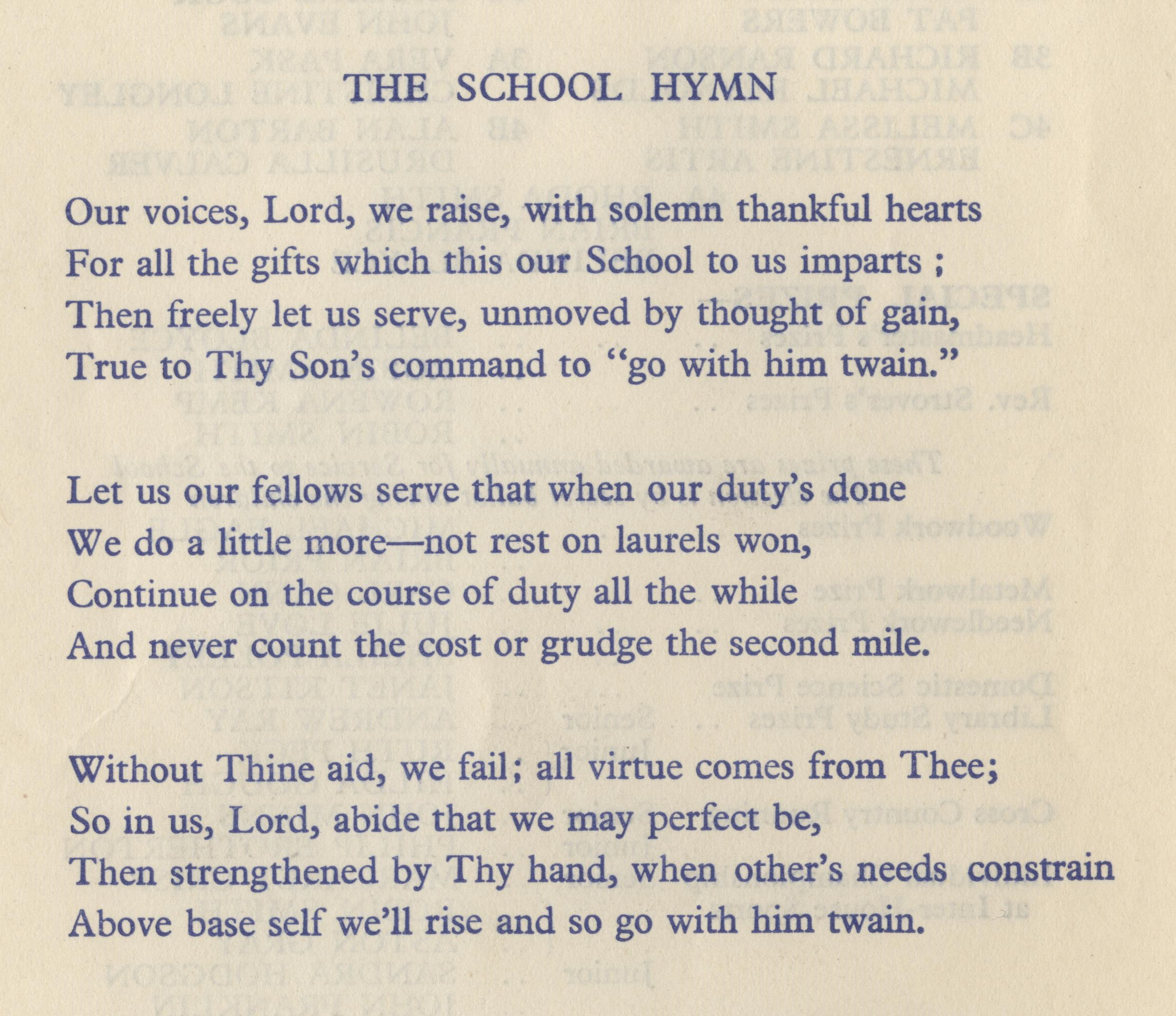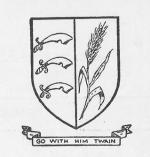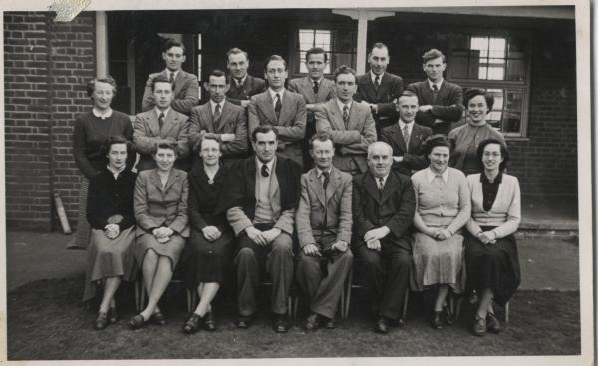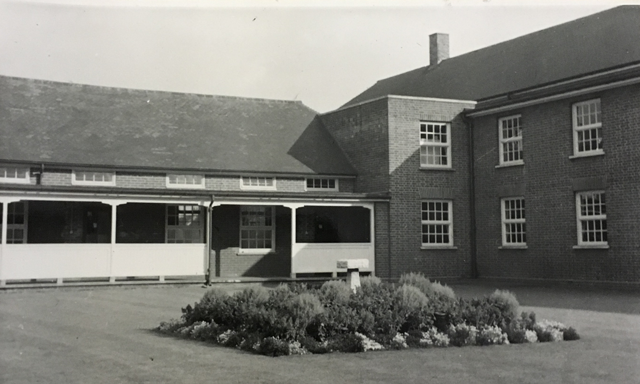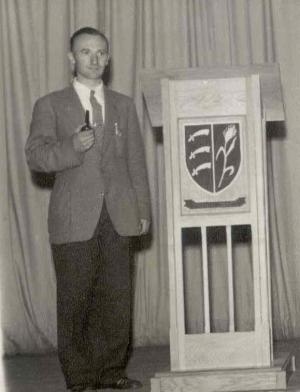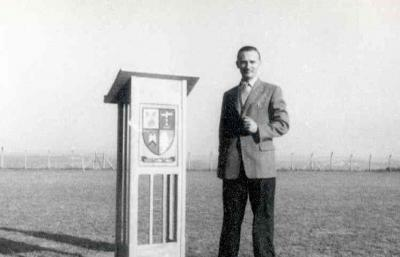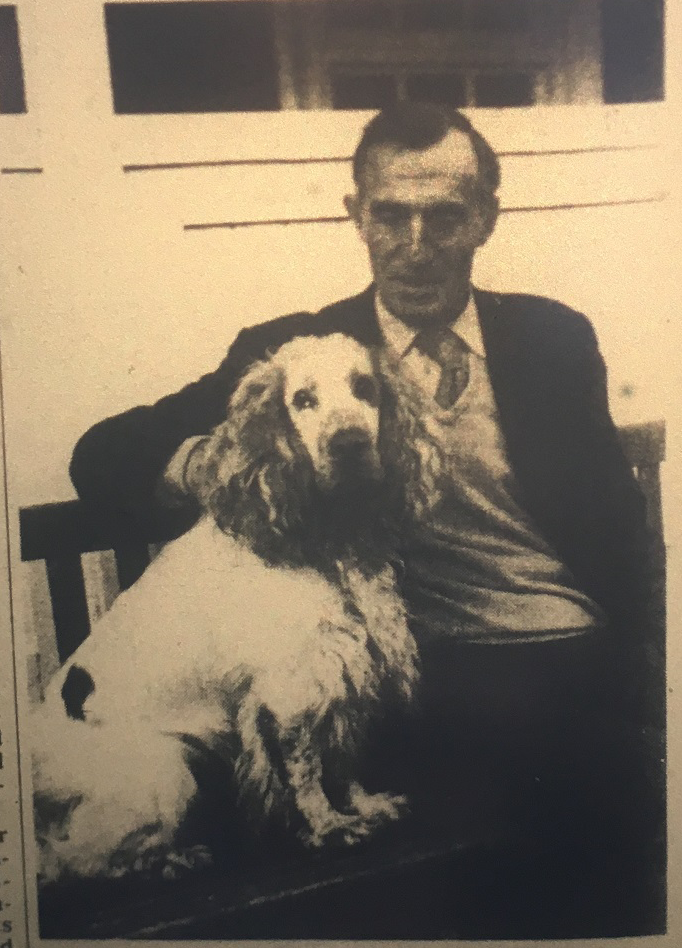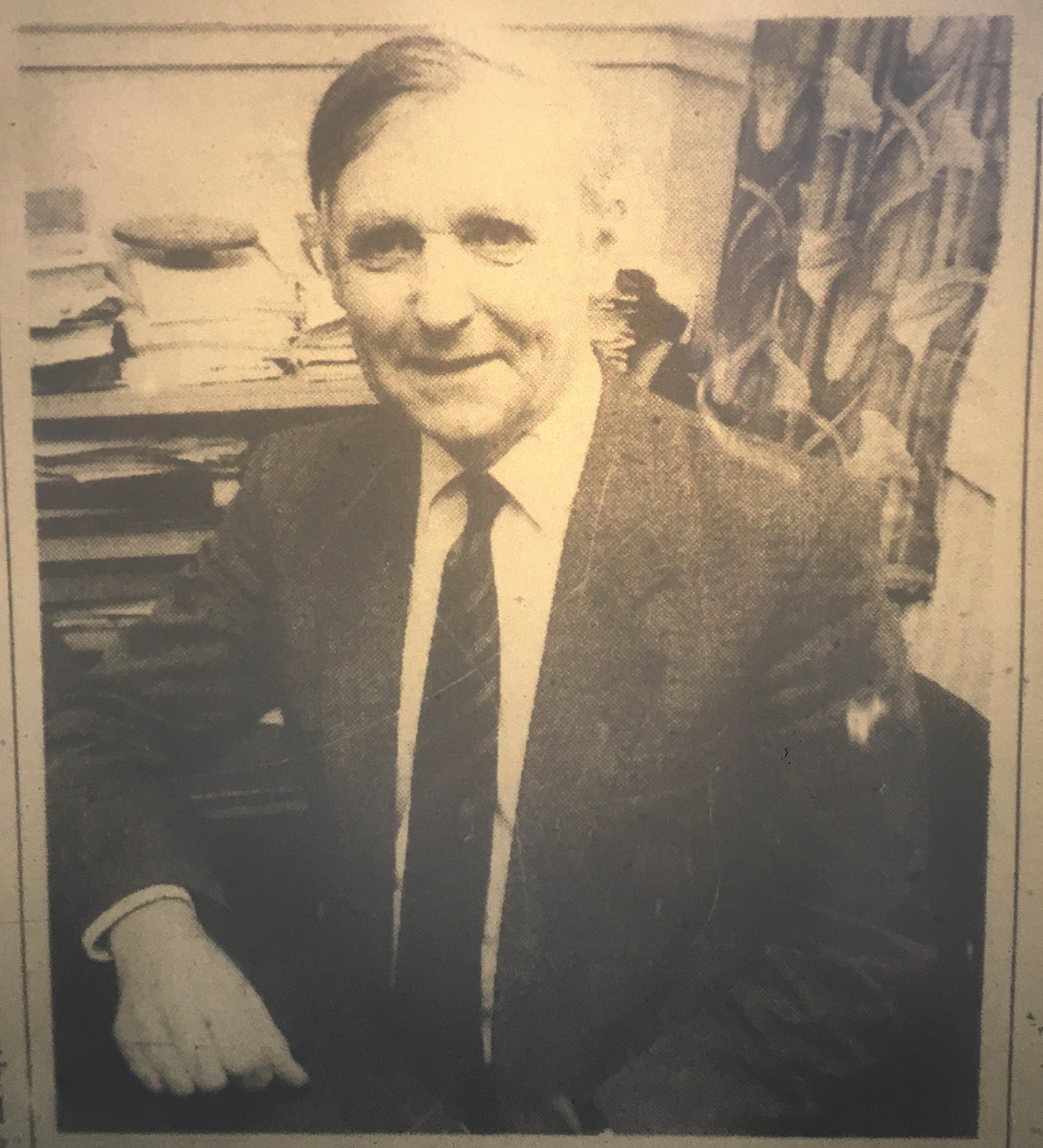School History
The 1839 Tithe map shows the land and fields that comprised the Parish of Lawford. Long before any development, Foxfield is clearly marked, along with a windmill at its far eastern edge.
Over ninety years later, in the May of 1931, five acres of land was purchased from a local landowner by Essex County Council at a cost of £850. This land had already been earmarked for the construction of ‘the proposed Manningtree Central School’.
The Manningtree Senior School was eventually built by Messrs C.Deaves of Bures and opened (albeit still somewhat unfinished and one week later than planned) to 335 children and 15 Teachers on Monday 13th September 1937 at a final cost of £20,700. Children were transferred to the new school from many local schools, including Mistley Norman, Bradfield, Wix, Ardleigh, Lawford, Little Bromley, Dedham National, Dedham Boys, Manningtree National and Manningtree Methodist School.
Contrary to popular belief, there are no records or evidence indicating that our school was ever built or used as a hospital!
Anyone further interested in the architectural design of our school, can also look up Margaret Tabor High School (initially Braintree Council Senior school), believed to have also been built by exactly the same builder (C.Deaves of Bures) as our school. Both inside and out, their original (now demolished) school was very similar to Manningtree. The Warren School in Chadwell Heath, also has a very similar external look, as well as schools such as the Colne Community school in Brightlingsea and St Helena school in Colchester. These schools were all constructed in the 1930’s as part of a huge Senior school building programme.
At least fifty Mistley children did not attend on the first day of opening, due to a dispute about transport provision and the exact distance from the Mistley area to the senior school. The local papers covered the ‘Mistley Mothers School Strike’ in detail over the subsequent months. The dispute continued and was finally resolved in April 1938, with all children eventually attending school.
The new school, a fine, modern purpose built school, was under the headship of Mr Jesse Cranswick MC. Flags flew on the outside of the main hall, lined rose gardens were situated at the front of the school and the up to date facilities, including electric lighting along with secondary gas lighting, were all very advanced for a new 1930’s school at that time.
Mr Cranswick was originally from Featherstone in Yorkshire and completed his teacher training at Dudley Training College. Prior to his appointment as the new Head at the senior school and since 1924, he had been Headmaster at Mistley Norman school. During the First World War, he had been engaged in battles at Ypres, The Somme and Arras, where he was awarded the Military Cross for gallantry. In 1931 he became Chairman of the Manningtree British Legion. In the early 1940’s, Mr Cranswick played an active part in the formation of the LDV (Local Defence Volunteers) unit at Mistley, prior to the coming of the Home Guard.
A detailed wall display containing further information and photographs of Mr Cranswick, his WWI military career and his family can be seen in the main corridor of the school.
Pictured Right – Mr J. Cranswick M.C. in his First World War uniform
On opening, and similar to many other schools at the time, the school was mixed, with mixed lessons, but children had different areas for recreation, including separate boys and girls playgrounds, cloakrooms and showers, located at the eastern and western ends of the main school corridor. These areas were very clearly defined, with many ex. students mentioning that they had never ventured to a particular end of the school, as it was very much ‘out of bounds’ to them!
The school had only eleven classrooms plus the main hall for teaching use. Classrooms were all originally equipped with wooden desks, ink wells and blotting paper. The wooden classrooms (bordering the Quadrangle) were used for teaching of practical subjects only. Classrooms were originally identified by numbers or the particular subject area (later by letters – ie. room A, B, C). Male and female staff rooms were situated at either end of the school. Subjects included rural gardening/Science, craft, woodwork, country dancing and P.T., plus other subjects familiar to us today. Unlike today, children started at the school when they were eleven years old and left when ‘of age’ at fourteen years.
Colchester Road at the time was still being developed and allotment gardens and fields surrounded the school site. Children here in 1938, recall Colonel Colliers fruit orchards that were situated at the bottom of the school field, where Highfields Primary school is now built. The school field at that time was considerably smaller than it is now. The Lawford Dale estate area was just then, agricultural land, and the school children would sit on the school field and watch steam trains go by on the main line and Harwich branch.
The photo below circa 1966 shows a train heading from the Harwich branch towards Manningtree station. Underneath is the arched bridge located on Station Road. Our school can be clearly see on the horizon. (Reproduced with kind permission from 53A Models of Hull)
When children started at the school, they were all issued with a blue report book, which charted their progress and ‘position in class’ throughout their time here. Class sizes in the report book below from 1939, were noted as high as 48.
An original 1939 Manningtree Senior School report book and opening page
Buses transported many of the children from outlying districts to the new school. These included over the years, Cooksons (Brothers Doug and Cecil drove the buses), Cedrics, Beestons, Vines, Bests and Partridge buses.
Childhood illnesses no longer prevalent today, such as scarlet fever and infantile paralysis (Polio), caused a number of periods of short term whole school closure during the late 1930’s.
At the start of September 1939 and following the announcement of the outbreak of the Second World War, the school was closed for one week. Air raid precautions were agreed, resulting in offset brick blast walls being built at all of the door openings and windows along the main lower corridor of the school. Shelter was provided for fifty children in each of the blast wall sections. The upper corridor cupboards were used for the storage of tinned food.
On the 11th September 1939, evacuees began arriving in the area and staff helped with the reception and billeting of children. Preliminary arrangements were made for the local children to attend school on Mondays, Wednesdays and Fridays and for evacuated children to attend on Tuesdays, Thursdays and Saturdays. Numbers were initially small (sixty-five children), so plans were made to incorporate these children into the existing classes. On the 31st May 1940, all the current evacuees (thirty-seven) left the school, but only a small number took advantage of the scheme to evacuate to the West Country. The majority returned to their homes in or near London. The two evacuee Teachers, Mrs Symes and Miss Gowers accompanied the evacuees to the West of England.
Interestingly, the admission registers from the period 1939 – 1943, show that evacuees came from L.C.C. Colegrave Road School, Stratford, L.C.C. Monteith Road Boys and Girls School, Bow, Water Lane School, Stratford, Maryland Point School, West Ham and Fulham Central Boys School, SW6, amongst others. These evacuated children were living in the care of local people. There were also a number of ‘private evacuees’ admitted to the school throughout the War. These would typically have been children whose parents chose to evacuate them to the local area, rather than being directed to do so. Evacuees continued to come and go for the duration of the War period.
Air raids started in the local area on the 19th June 1940, occurring regularly and increasing day and night throughout the Battle of Britain period and the remainder of 1940 and 1941. On the 2nd September 1940, the school was closed for three days by order of the Essex Education Committee in order that ‘all windows were to be protected with adhesive paper to protect against splintering’. Staff continued this work on the 5th September 1940.
When the air raid sirens sounded, children were brought down into the lower corridor for protection. Girls passed the time by knitting socks, gloves, balaclavas and pullovers for the military forces. Later, Empire Day certificates (marked on the 24th May) were personally issued during school assembly, to those children involved in helping.
An Empire Day Certificate awarded to an ex. pupil in 1940
The front of the school, the Quadrangle and Colchester Road allotment gardens were given over to the ‘dig for victory’ campaign. Boys helped carry out gardening tasks and growing vegetables for use in the school canteen.
‘Digging for Victory’ – Colchester Road directly opposite the school and before the current houses were built
A local news report, reported of the ‘School’s Fine War Work’:
Some male staff were called up or volunteered for war service, which meant the school staff was severely depleted during the war years. Some supply teachers who had moved away from London were used during this time. One of the permanent teachers was involved in the D-Day beach invasion in June 1944, where he was wounded. He returned to the school after demobilisation.
In April 1945, the school became known as the Lawford-Manningtree County Secondary School.
The Education (or ‘Butler’) Act of 1944 had committed to ‘secondary education for all’. This raising of the school leaving ages, combined with the growth in numbers over the years, found that further building work was necessary. In the late 1940’s, further expansion occurred with more classrooms. Three more permanent classrooms were built on the eastern side of the Quadrangle.
Two new ‘temporary’ Horsa wings were additionally built, one on the eastern flank and one on the western flank of the Quadrangle. These were originally known as rooms 10 and 18 and have had various uses over the years, including rural Science, metalwork, car mechanics and music. The eastern wing (refurbished in the 1990’s) was still in use up until July 2019, as a drama studio and vocational workshop area.
HORSA (Hutting Operation for the Raising of the School leaving Age) was the Governments response to the raising of the school leaving age and provided schools with urgently needed additional classroom buildings, typically constructed with metal ‘Crittall’ windows and a corrugated roof.
To cope with the increasing numbers of children requiring cooked lunches (in 1946, over 230 children stayed for dinner), a new Horsa style kitchen and dining hall building was eventually built and opened in September 1949. This building, replaced the original kitchen in the main school, which had been serving meals via a serving hatch, into the main hall (seen in the photograph below). The new canteen was situated on the western flank, adjacent to the boys playground. As well as providing cooked meals for the school, it also prepared and delivered meals to many outlying primary schools.
The main hall was put to use for Physical Training (PT) at the time. PT equipment, ropes and bars were situated around the hall (these still being in place up until the 1990’s). Changing rooms and cloakrooms were situated at either end of the main corridor, adjacent to the boys and girls playgrounds.
The main school hall being used for a PT lesson (taken prior to the organ chamber/balcony construction)
Playing netball on the girls playground (Colchester Road can be seen in the background)
Mr J. B. Goodson took up the role of Head in 1947 (after Mr Cranswick died in 1946), through until 1952
School excursions during 1948 and 1949 included the ‘Northern Trip’ visiting the Lake District, the first of the Swanage trips (1949), South of England Tour (1951), Brandon (1952-1955) and the Wicken Bonhunt Expedition (1953).
The Northern Trip itinerary from 1949
School plays and productions have always been big events at the school. In 2016 the following framed photograph came to light, and features the cast from a school production of The Immortal Lady, performed here in December 1951.
The Immortal Lady School Production Photos and Cast – December 1951
The school house system with houses Country, Road, Town and Vale (houses were linked to where children lived) along with the school motto, hymn, uniform and badge appear to have been introduced during the early 1950’s, although the wearing of uniform at that point was not compulsory.
The four original School Houses (l-r top Country and Road, l-r bottom Town and Vale)
The original full three verse school hymn – taken from the Speech Day Programme – 17th July 1959
The words to the school hymn were actually sung to the tune of ‘Non Nobis Domine’ by Roger Quilter. My thanks go to Joan Cook (nee Gardiner) and Colin Nicholson (Music teacher here, in 1955) for their help and perseverance in tracking the music down! Scroll to the bottom of this page to hear a recording of our School Choir performing the original school hymn.
The Cranswick Memorial Cup was established after the death of the first Head in 1946 and was presented every year by Mrs Cranswick to the winning school house, through until the 1970’s. This cup is still kept within the possession of the school.
The school motto on the badge ‘Go with him Twain’ is biblical and originates from the New Testament. It really means to ‘go the extra mile’, ‘be a good person’ and to do more than is asked of you – ‘can you do a little more?’ This motto remains on our school badge and the ethos behind it continues to this day.
The School badge (pictured left) was taken from the cover of a 1959 school report book
Mr A. Elms (Head) and Staff – Autumn 1952
Back row (l-r) Mr Brunning, Mr Parish, Mr Prosser, Mr Cole, Mr Dunne
Middle row (l-r) Mrs Wray, Mr Rastall, Mr Cobbold, Mr Mason, Mr Davies, Mr Easton, Miss Thompson
Front row (l-r) Mrs Evans, Mrs White, Miss Harnett, Mr Elms, Mr Cornhill, Mr Long, Mrs Brunning, Miss Milk
Mr L. Willimott took up post of Head from Mr Elms in April 1954 and retired in July 1974
The first ever school ‘Continental’ trip to Paris (for one week), took place in July 1961. Other noted school excursions included Lyme Regis (1956, 1958, 1959 and 1962), Marlborough (1958), Swanage (1958 and 1960), Bury St Edmunds, Thetford and Grimes Graves (1957 and 1958), Paris (1962), Switzerland (1965 and 1968), Brandon and Thetford (1970) and the start of the regular Frankenberg exchange trips (1971 onwards).
Mr Willimott was particularly involved in the early establishment, forging and and maintenance of links between Manningtree and the town of Frankenberg, in the German state of Hesse. In March 1971, thirteen people from the Manningtree district (Mr Willimott being one of these) signed the founding Partnership Charter, which linked (or ‘twinned’), Manningtree and Frankenberg.
School Quadrangle circa 1960’s – an unwritten school rule then, was to avoid taking shortcuts across the well kept grass!
At the 21st anniversary of the school in 1958, an oak lectern with the school badge on it, made by teacher, Mr Easton, was dedicated. The dedication took place at a commemoration service, held at Dedham Parish Church. An additional lectern showing the four school houses was also constructed at a later date – both lecterns are still in use to this day and used for awards afternoon and other special events.
Mr Easton on the school stage with the new oak lectern – 1958
Mr Easton on the school field with the new ‘house’ oak lectern
In 2016, a twenty minute colour film was discovered, called ‘The Manningtree Mechanics’. The film was made in 1958 by Day Release students from the BX Plastics factory at Brantham and is a fascinating ‘moment in time’ covering the environs of Brantham, Manningtree and Mistley. The film, produced by Michael Barratt Brown, also features parts of the school which have changed considerably since the film was made (particularly the original boys playground area). The sound track from the film however is missing. If you have any further information about the whereabouts of the soundtrack or more information about the film, please do get in touch.
Update July 2021 – ‘The Manningtree Mechanics’ film now appears on our Youtube channel!
Click below to view the film:
It has been edited and is accompanied throughout by a piano soundtrack specially created by Frank Coulter (who appears playing the piano towards the end of the film). This will be the first time for many years that people will have an opportunity to view the film. We would particularly like to hear from anyone who can name those appearing in the film.
A fantastic scale model of the whole school was made by Mr Clarke (Groundskeeper) and is remembered by many ex. Students who came here during the late fifties/early sixties. Does anyone have any photographs or further memories of this or even know what happened to it?
A finely embroidered dark blue ‘Go with him twain’ table cloth and flag still exist (the table cloth is still used annually for awards afternoons). We think these items were probably crafted by pupils during the 1960’s. If you know any more or indeed helped to make them, please do get in touch to share your memories.
The early 1960’s saw the building and opening of the new Stourdale Youth Centre by Essex County Council. Many vividly remember clubs, dances and discos held at the Stourdale throughout the 1960’s, up until the 1990’s. Prior to this date, some of the school classrooms and the dining hall had been used for various after school activities. The Stourdale building, fronting Colchester Road, is now owned by the school and used for teaching Food and Vocational subjects.
During his time as Head, Mr Willimott organised fundraising over the years, to pay for a new organ for the school hall, along with construction of an organ chamber/balcony to accommodate the organ pipes. Students assisted Mr Willimott, Mr Easton and the Thaxted organ builder, Mr Cedric Arnold with the construction and the fine oak woodwork for the keyboard. Up until 1985, the organ was played by staff and students for various school concerts and special events. Originally obtained from the Holy Trinity Church in Colchester in 1960 (upon its closure), it was finally removed from our school in the 1990’s, but the balcony remains today.
Mr Willimott and his dog Zebedee on his retirement – July 1974
Mr W.V.C. Curnow – Head from September 1974 – August 1993
The strong links between Manningtree and Frankenberg, started by Mr Willimott, continued under the Headship of Mr Curnow. These links also included regular Frankenberg exchange visits.
Other noted school journeys and visits during these years, include Essex Adventure Centre at Maes-y-lade in Breconshire, 4th Year visit to Majorca (Easter 1980), Evry in France, exchange visits to Brou, Le Touqet and skiing trips to Italy and Austria.
The 1970’s saw the undertaking of a large building programme. An Art and Science classroom (now our school Library) was constructed and opened in 1973, on part of the boys playground area, bordering the Quadrangle. A new drawing, woodwork, metalwork technical/craft block of three classrooms, was also built on part of the girls playground towards the front of the school and opened in December 1975. Previously these subjects had been taught in the Horsa buildings.
The school became Comprehensive on the 1st September 1976 and then became known as Manningtree School (previously Manningtree County Secondary School).
A new Sports Hall and caretakers house was also built and opened on the very eastern edge of the school site, in the Spring of 1977, along with three tennis courts, constructed adjacent to this, and opened soon after. The new Sports hall, now allowed for whole school assemblies to take place, whereas previously the Main Hall was the only large space available.
A new two storey 17 room classroom block, was built on the site of the boys playground and was officially opened by Mrs Beryl Platt CBE, on the 23rd September 1978. Mrs Platt also unveiled a new carved wooden commemorative plaque, made by Head of Craft, Mr Easton. This new classroom block, comprised of three additional Science Laboratories, Library (previously the Library had been located in a room around the Quadrangle), specialist rooms for Home Economics, Needlework, Maths, English, History, Geography, RE and a Modern Languages suite, as well as seminar rooms for small group work.
Under the Headship of Mr Curnow, the annual ten mile sponsored walk was introduced on the 15th July 1975. This long established walk, involving the whole school, walking a route through the ‘Constable’ countryside of Flatford and Dedham, continues to this day. The walk was initially created, to raise much needed funds to construct an outside twenty-five metre swimming pool, built adjacent to the ‘new’ Sports Hall. Bobby Robson, the former Ipswich Town Football Manager and England Manager, had supported the effort by attending a Gala launch day in April 1976 and he officially opened the completed swimming pool on the 21st September 1979.
In April 1985, a new combined kitchen, dining hall and Drama area was opened on the eastern side of the school, replacing the previous ‘temporary’ Horsa style canteen/dining hall opened in 1949. This new dining hall was directly connected to the earlier built 1975 technical/craft classroom block.
Mr Curnow on his retirement – July 1993
Mr M. Nesbitt – Head from September 1993 – August 1997
February 1996 – The school became Grant Maintained and known as The Manningtree High School.
Miss D.Hollister – Head from September 1997 – August 2015
Further building continued at the rear of the main school (adjacent to the school field), with the official opening of a new six classroom English and (at the time) RE block in 1998. To mark the sixtieth anniversary of the school, a time capsule was also buried within the foundations of this new block in 1997. A purpose built Music block and additional PE changing rooms was also built very near to this and officially opened on the 14th May 1999.
2006 saw the opening of an additional new Sports Hall, boasting a brand new gymnasium with sprung wooden floor, new changing rooms and reception. This fantastic facility was built alongside and connected onto the existing 1977 built, Sports Hall building.
In 2010, the school purchased the Stourdale Youth Centre and an extension was built and opened, connecting the building to the rest of the school. This provided teaching areas for Food, a Drama studio and offices.
Awards Afternoon has always been a highlight of the school year and the event continues to this day. Previous guests helping to award school prizes, have included:
Marc Bannerman (& Nadia Sawalha), Diane Youdale, Jeremy Sheffield, Lucy Benjamin, Lucy Speed, Kevin Adams and Ian Westlake, Adam Hart-Davis and Bobby George, Carol Thatcher, Carrie Grant, Jake Meyer, Gail Emms, Jon Tickle, Zoe Salmon, Steve Backley, Ortis Deley, Angelica Bell, Anton Du Beke, Danny Crates, Cole Moreton, Her Honour Judge Samantha Leigh, Paul Edmondson, Major Kev Fitchett MBE and Liam Hadley (2023).
The school became an Academy Trust in March 2012.
Mrs S. Morris – Headteacher from September 2015 – August 2023
2016 saw the school awarded a £1million grant to replace the four wooden timbered classrooms, bordering the Quadrangle, with a new Art block and towards other essential building repairs.
A new Multi Use Games Area (MUGA) built on part of the school field, adjacent to the Sports Hall, was officially opened by Ipswich Town footballers, Freddie Sears and Jonas Knudsen on the 20th September 2016.
Former students will remember on the school field, the bank and the dip down to the lower field. Work is now complete, providing us with a single level field.
May 2017 – Work took place, dismantling and demolishing the original 1937 wooden building. Over the years, these four classrooms had seen varied use, including Food/Home Economics, History, Business Studies, Science, Art, Textiles, ICT and even at one point the school tuck shop! Departments previously occupying the wooden block, have being moved elsewhere in the school. The original 1936 building plans below, show the four classrooms and their very first planned teaching use, ready for opening in 1937:
Original 1936 building plan showing the four wooden ‘practical’ classrooms, bordering the Quadrangle
September 2017 – The new Art and Modern Foreign Language block opens. The Art department now comprises two fantastic new classrooms with vaulted ceilings and an impressive new modern look to teaching and learning here at Manningtree High School. We also have the whole MFL department situated together in their three new classrooms within this block as well.
July 2018 – A new bus/coach park has been constructed and opened on land adjacent to the school (on the western side). This alleviates the long standing issue of school buses having to park outside the school on Colchester Road.
July 2019 – Work commences on demolishing the 1940’s Horsa building at the eastern end of the school. Additionally, building work starts at the western end of the school, where a two storey ‘in-fill’ and new classrooms are to be constructed on the old ‘boys’ playground area. This in-fill joins the old original part of the school building to the Science/Humanities block, offering increased capacity, better movement throughout the school and more modern teaching rooms.
1st September 2019 – Our school became part of the Alpha Trust Multi Academy Trust (MAT).
September 2020 – The new purpose built Drama and Performing Arts classrooms (located on the site of the old Horsa block) and extended canteen opens to all students. The new in-fill block, offering new Science, Computer Science, History and Maths classrooms, also opens. The new block occupies the land to the rear of the staff room and replaced the old ground floor ‘glass corridor’ area. Our main school corridor end-to-end (Stourdale to Technology) now measures some 115 metres (or 377 feet) in length!
All teaching rooms have been renumbered to allow the new additional teaching rooms to be easily integrated. The original classroom numbering scheme up until this point, dates back over forty years!
Mr B. Briggs is our current Headteacher
Additional wall displays, showing more school history information, including a whole school photograph from the 1930’s and 1950’s, can be seen in the main corridor of the school and also upstairs near Room 35 (RE).
The 80th anniversary of the opening of our school was marked with an afternoon tea on Wednesday 20th September 2017. This small gathering, included former Teachers, Mr Palmer, Mr Gallifant, Mr Bloom, Mrs Branch, Miss Mingay and Miss Allinson amongst other ex. Staff, Governors and former pupils. You can read more about this by clicking the following link:
Harwich & Manningtree Standard news article
2025 marks the 50th Anniversary of our annual Sponsored Walk. If you have any memories or stories about the walk, please do get in touch. Mr Gallifant and other Teachers walked the very first route way back in 1975.
I would like to make an appeal for any items, photographs or memories relating to the school history, that you may have tucked away at home. In particular, any photographs which include the school and its buildings, staff, students or trips and events from the period between the opening of the school in September 1937 to the present day. The Second World War period is always very interesting. Generations of families have attended Manningtree High School, so it would be great to build on our small archive of photos, newspaper clippings and other key items and information.
If you can help or have any memories you would like to share, please contact me via email at school@manningtreehigh.com or contact the school using the details on the ‘Contact Us’ tab.
Mr B. Colley – December 2025
A special performance of the original pre-1970’s school hymn, performed by our School Choir on Wednesday 20th September 2017, featured in the local press here:
and the actual recorded performance is also available to listen to below:




